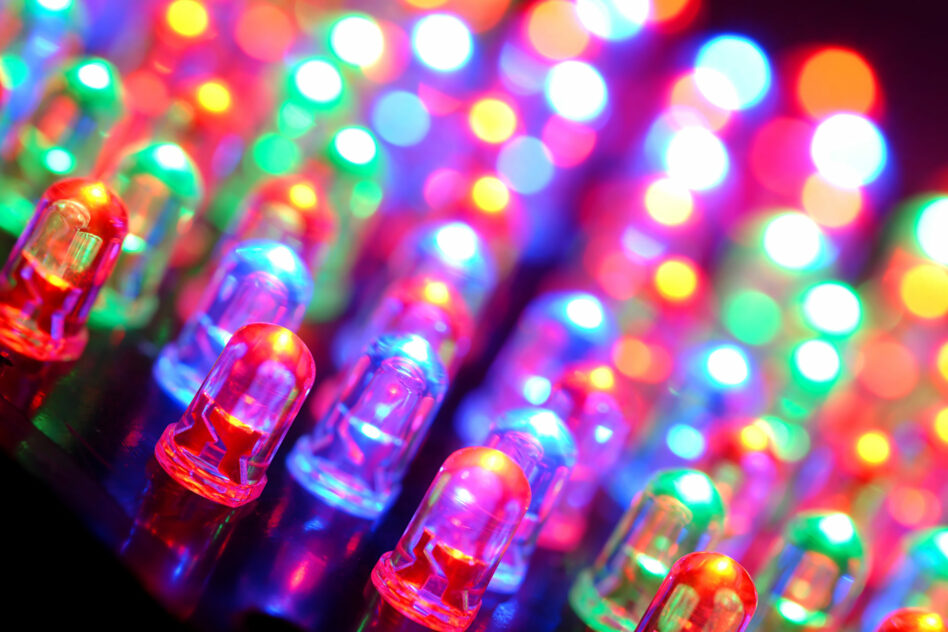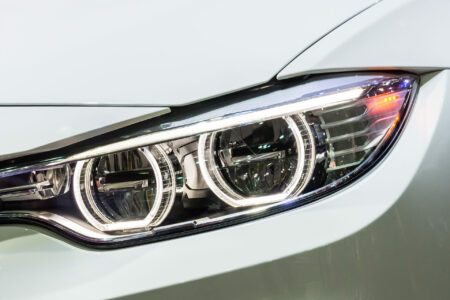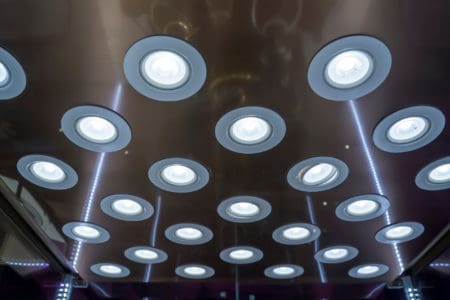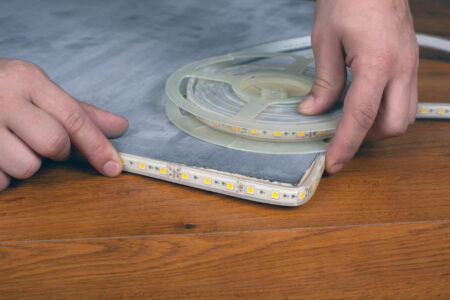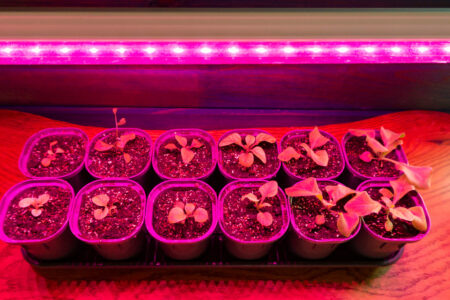With the invention of LED lights, the world shifted towards them in thousands of applications. Today, they surround us everywhere we go. But have you ever stopped to wonder, who was behind this? Read on as we discuss the history of LED lights.
A Brief History
LED lights have quite an interesting history. It was not one person who invented them. Instead, there were a series of events, some even unintentional, which led to the development of LED lights.
Though you might think LEDs are relatively new, the technology has actually been around for almost half a century. There were several stages of research and development before scientists came to the LED lights we have today.
The Research
LEDs work based on electroluminescence, which happens when a material emits light when an electric current runs through it. The first to discover it was a scientist called Howard J. Round in 1907.
Twenty years later, a Russian scientist named Oleg Lossev further studied electroluminescence and published a paper about it. Though he didn’t actually create LEDs, his research played a part in future inventions.
The Experiments
In 1936, Georges Destriau, who worked in the same lab as Marie Curie, created an experiment based on Losev’s work. He made a glowing material through electroluminescence and referred to it as Losev light.
In 1939 Hungarian scientists Zoltan Bay and Gyorgy Szigeti took a step toward the invention of LEDs. They patented a lighting device based on a material named Silicon Carbide, which emitted a yellowish or greenish light.
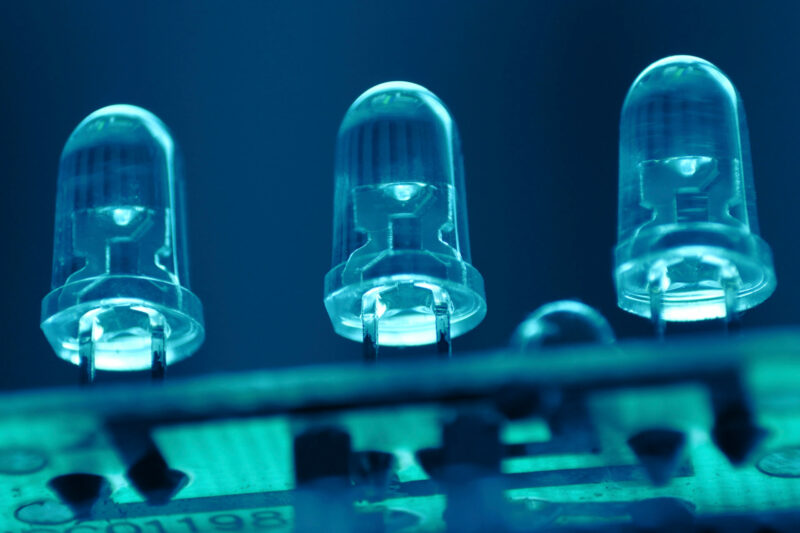
The Progress
LEDs made serious progress in the early 1960s. In 1961 Gary Pittman and Robert Biard, who worked at Texas Instruments corporation discovered how to emit infrared light through Gas.
They created and patented infrared LED lights. However, humans can’t see infrared light, as it’s not in the visible light spectrum.
In 1962, Nick Holonyack walked the extra mile and created the first visible LED light. At the time, he worked as an engineer for a company named General Electric.
Holonyack was later named the “Father of the light-emitting diode” due to his notable work on LEDs.
The LED light he created was red. It started being widely used in Hollywood movies, especially science fiction, as they usually required red laser beams.
Though LED lights had proven efficient, they were still not economical as they were expensive at the time due to their high manufacturing cost.
The Innovation of LEDs
After Holonyack’s creation, scientists and researchers started experimenting with LED lights. In 1972 an engineer named George Craford, a former student of Holonyack who worked at a company named Monsanto created the first yellow-colored LED light.
He also improved the brightness of Holonyack’s LED light by 10 times. His creations made Monsanto the first company to mass-produce LED lights.
In 1976, Thomas P. Pearsall created brighter and more efficient LED lights for usage in fiber optical telecommunication. That was a time when fiber optics were beginning to gain popularity. Not only were they used in communication, but in the entertainment sector as well.
Later in the 70s, LED lights became more widely popular when a company named Fairchild Optoelectronics produced affordable LED lights, which broke the economic barrier to purchasing them. They sold each unit for less than five cents.
With their new higher brightness and lower price, people started using LEDs in different technologies. They proved to be of great use in traffic lights due to their high brightness and speed of turning on and off.
Additionally, unlike the older fluorescent lights, when one light fails the others don’t. Scientists continued experimenting with LEDs, and by the early 1990s LEDs had undergone several development stages.
Blue Light
The next milestone in LED lights was the development of the blue LED light. Shuji Nakamura, a Japanese American engineer who worked at Nichia company, created the first blue LED light.
You might not think much of this, but inventing blue light was actually considered a breakthrough as many scientists had tried to do this before but without any luck.
Nakamura’s discovery opened the door to many innovations and technological developments. In 2014 he received a Nobel prize in physics for his invention of the blue LED. He shared his prize with Akasaki Isamu and Amano Hiroshi, two Japanese material scientists who worked with him.
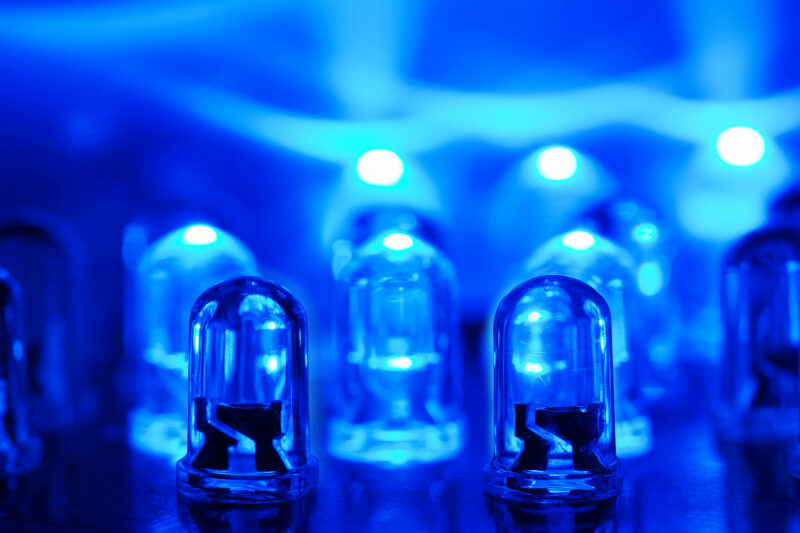
Blue LED light had benefits beyond expectations. When combined with red and green LEDs, scientists were able to produce white LED light. That was when LED lights became a suitable replacement for incandescent and fluorescent lamps.
Blue light also led to the creation of Blu-Ray discs, which replaced older CDs and DVDs. The Blu-Ray disc stored videos for longer hours and had higher definition.
Today Blue LED is used in many devices such as smartphones, TVs, and tablets. Furthermore, a new technology called blue light therapy is used to treat skin conditions. Some research even says that it could prevent skin cancer.
LEDs Today
LED lights are the best lighting option we have today. Not only are they cost-efficient, but they also last for a long time. The advanced technology has made them available in different models, colors, and brightness options.
To give you an idea, here are just a few of the uses of LED lights:
- Residential lighting
- Smartphone backlighting
- TV backlighting
- Automotive lights
- Christmas lights
- Traffic lights
- Street lights
- Refrigerated case lighting
- Agriculture applications
- Billboards
With unmatched flexibility and brightness, LEDs have created endless possibilities and a literally brighter world. Thanks to the development of LEDs, we now have higher-resolution displays which led to huge advances in art and entertainment.
We also have different techniques of color therapy used to treat different physical and mental health conditions.
Due to the exciting blend of different colors of lights, we can now see giant towers, architectural landmarks, and even entire skylines of big cities beautifully lit in ways that leave us amazed.
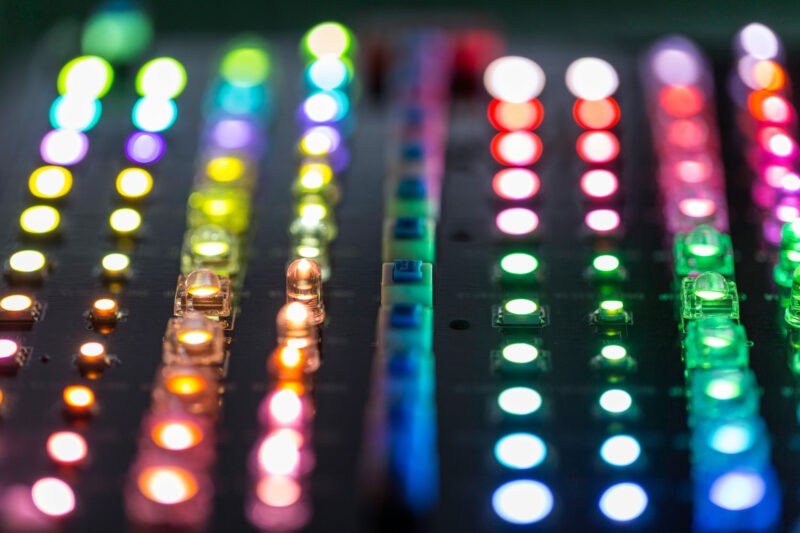
The Future of LEDs
The technology and market for LED lights are growing rapidly. They continue to be extremely useful in different industries such as architecture, medicine, entertainment, and aerospace. Yet, there’s still room for further future development.
LEDs continue to be developed in the automotive industry. They are used in the indicators and headlights of cars. They’re also used in ways that enhance illumination and reduce glare, giving drivers an improved experience and higher safety.
Li-Fi
Li-Fi is the latest idea to come out of LED technology which is expected to replace Wi-fi in the future. The concept was first introduced in 2011 by professor Harald Hass and is still being developed today.
Due to its usage of light waves (which are incredibly fast) instead of radio waves, it’s expected to be 100 times faster the Wi-fi. Li-Fi also has other advantages over traditional Wi-Fi than being fast, such as:
- Higher security
- More bandwidth
- Wireless technology
- Cheaper
- Energy saving
- Better connection
Other Possibilities
When it comes to the potential of LED lights, the sky is the limit. Scientists are still discovering new ways to utilize this incredible technology. In the future, we could have new inventions which we didn’t think were possible.
Moreover, when we combine this technology with solar panels, the result is cheap and sustainable electricity. We could provide many villages around the world with electricity, changing the lives of people who don’t have access to it.
